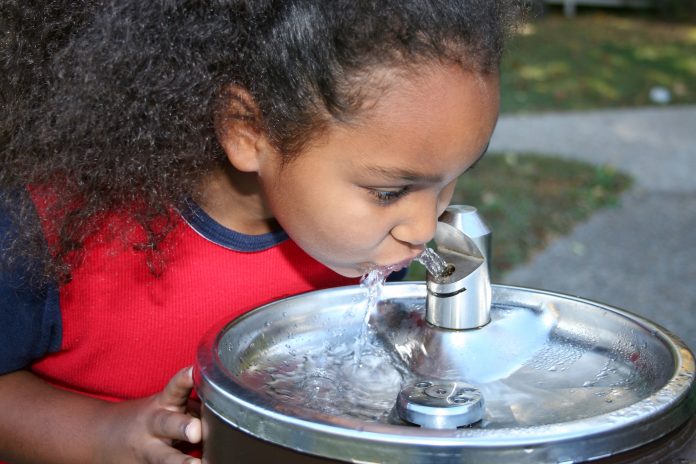Safe drinking water in California is becoming scarce, as contaminated drinking water continues to disproportionately impact communities of colour across the state
Around 370,000 Californians rely on drinking water which may contain high levels of arsenic, nitrate, or hexavalent chromium – all of which can have acute toxic effects on humans if consumed.
Since 2012, access to safe, clean, and affordable drinking water has been recognized as a human right in the state of California. Community water systems are required by federal regulations to undergo regular testing for contaminants that are harmful to human health.
However, many California community water systems do not meet regulatory standards, and because of this, unsafe water has disproportionately impacted communities of colour. In addition, many largely rural households receive their tap water from private domestic wells that continue to be largely unregulated by the state.
Safe, clean drinking water is becoming more urgent as climate change brings prolonged droughts
To address this rampant issue, the team has since released an online Drinking Water Tool that policymakers and members of the public can use to look up where their water comes from, as well as map areas of the state where groundwater sources are likely contaminated with unsafe levels of arsenic, nitrate, hexavalent chromium and 1,2,3-Trichrolopropane.
Additionally, this tool also allows users to compare drinking and groundwater quality information with data on community demographics across the state and models how drought conditions may impact water availability for domestic wells and community water systems that serve fewer than 10,000 people.
Drinking water and its demographic disparities
Published in the American Journal of Public Health, this study is the first to quantify the average concentrations of multiple chemical contaminants in both community water systems and domestic well areas state-wide, systematically analysing demographic disparities in drinking water quality across California.
Combining data on the state’s community water systems, domestic well permits, residential tax parcels, building footprints and census results, researchers aimed to locate Californian households which are likely to be served by unregulated domestic wells.
They used the measurements of drinking water and groundwater contamination throughout the state to calculate contaminant levels for those served by both community water systems and domestic wells.
The researchers based their study on three chemical contaminants based on their prevalence in the state, as well as on their known toxicity. Firstly, arsenic is found naturally in groundwater and can be concentrated by depletion of the water table. Secondly, nitrate contamination of groundwater is common in agricultural regions due to fertilizer runoff and industrial animal farming. Finally, hexavalent chromium is produced by industrial and manufacturing activities.
Study co-senior author Rachel Morello-Frosch, said: “California’s Human Right to Water Law articulates the right to clean and affordable drinking water for people served by both community water systems and domestic wells, but implementing this right is a significant challenge for people who rely on domestic wells because of the lack of regulatory infrastructure.
“Our data strongly indicate that a large number of people who rely on domestic wells are likely drinking water with high levels of contaminants and suggest locations where we should begin targeted assessments to ensure that the human right to water is fully implemented.”
A lack of information on domestic well water quality and regulatory infrastructure
According to the analysis, approximately 1.3 million Californians, which is nearly 3 and a half percent, rely on domestic wells for their water supply. Of the estimated 370,000 Californians whose water supply was found to likely contain high concentrations of arsenic, nitrate or hexavalent chromium, more than 150,000 are served by domestic wells.
Study co-senior author Lara Cushing added: “I think a lot of people might be surprised to learn that, given how wealthy the state of California is, we still don’t have universal access to clean drinking water. For the three chemical contaminants that we looked at, we found that places with a higher proportion of people of colour experienced greater levels of drinking water contamination.
“This pattern has already been documented in community water systems, particularly in the San Joaquin Valley, but our work is one of the first to examine the question statewide and among domestic well communities not served by public water systems.”
Study first author Clare Pace, stated: “The goal of the Drinking Water Tool is to provide timely access to data that can inform efforts to protect the state’s drinking water and groundwater supplies, particularly in disadvantaged communities where the threats are greatest.
“We’d like to continue to refine the Drinking Water Tool in collaboration with the Community Water Center and in response to feedback from other organizations and decision-makers who can help ground-truth the data.”
Cushing continued: “In this era of climate change, our groundwater is becoming an increasingly precious resource, and we’re facing historic levels of drought and well failures. Even if a well doesn’t fail, drawdown of the water table can impact water quality by concentrating contaminants, making these problems even worse.”
However, the researchers say that due to this study being limited to three common contaminants, results likely underestimate the actual number of Californians impacted by unsafe drinking water from other compounds for which data are not as widely available.











